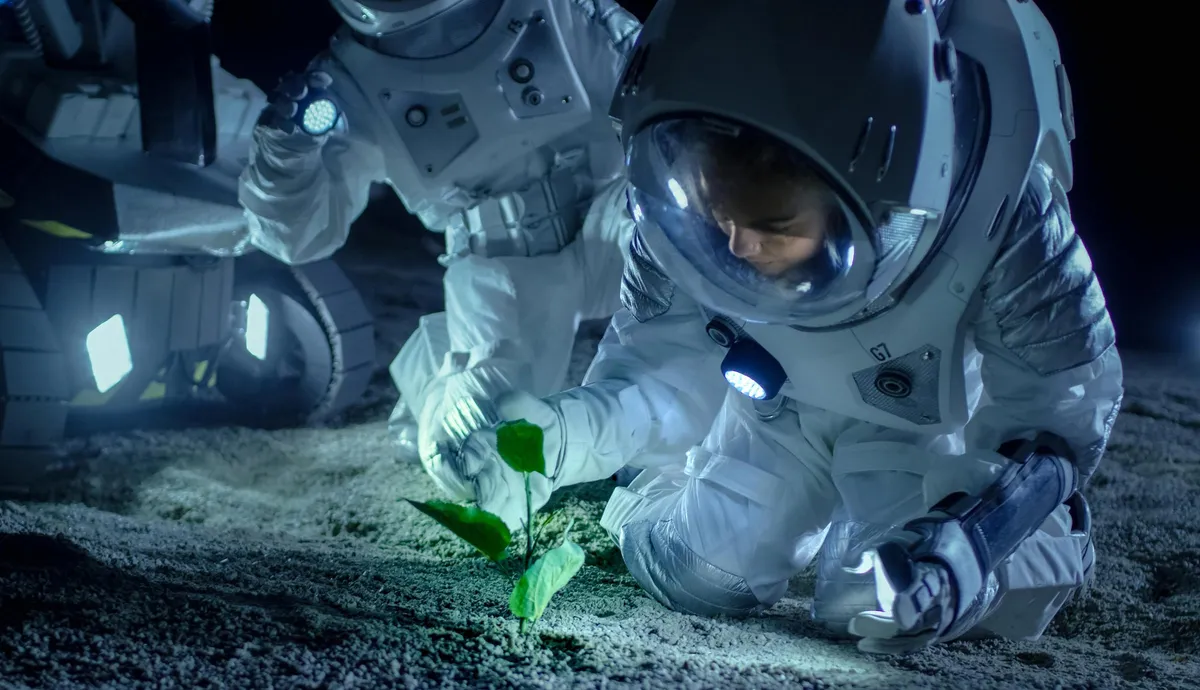
A groundbreaking new solar-powered technology has been developed that extracts water from lunar soil and transforms astronaut-exhaled carbon dioxide (CO₂) into breathable oxygen and usable fuels. This innovative research, published on July 16 in the journal Joule, holds the potential to drastically enhance long-term human survival on the Moon, making future space missions more feasible and sustainable.
The research team’s ability to extract water from lunar soil could significantly reduce the reliance on transporting essential resources from Earth. “We never fully imagined the ‘magic’ that the lunar soil possessed,” stated Lu Wang from the Chinese University of Hong Kong, Shenzhen. “The biggest surprise for us was the tangible success of this integrated approach.” This one-step integration of lunar H₂O extraction and photothermal CO₂ catalysis not only improves energy efficiency but also reduces the costs and complexities involved in infrastructure development on the Moon.
For years, space agencies have contemplated using the Moon as a launchpad for deeper space exploration. However, a primary obstacle has been ensuring a continuous supply of essential materials, particularly water, for astronauts living and working there. The study highlights that transporting just one gallon of water into space incurs a staggering cost of approximately $83,000. Given that an astronaut requires about four gallons of water daily, the logistics of sustaining human life on the Moon quickly become impractical and financially burdensome.
Soil samples obtained from the Chang’E-5 mission provide compelling evidence of the presence of water on the lunar surface. The authors of the study propose that human explorers could harness these natural lunar resources to meet their essential needs, effectively avoiding the high costs and logistical challenges associated with transporting water from Earth. Previous methods of extracting water from lunar soil were energy-intensive and did not facilitate the conversion of CO₂ into fuel or other necessary compounds.
To build upon this research, Wang and his team created a dual-purpose technology that extracts water from lunar soil while simultaneously converting the CO₂ produced by astronauts into carbon monoxide (CO) and hydrogen gas. These by-products could then be utilized to produce both fuel and breathable oxygen. The technology employs a novel photothermal strategy that harnesses sunlight to generate heat, enabling the extraction and conversion processes.
The researchers tested their innovative technology using both lunar soil samples collected during the Chang’E mission and simulated lunar materials, all housed in a batch reactor filled with CO₂ gas. They utilized a light-concentrating system to facilitate the photothermal reaction. The team focused on ilmenite, a mineral known to be one of the several water reservoirs in lunar soil, to evaluate photothermal activity and better understand the mechanisms at play.
Despite the laboratory successes of this technology, significant challenges remain for its implementation on the Moon. The harsh lunar environment presents obstacles such as extreme temperature fluctuations, intense radiation, and low gravity. Furthermore, the inconsistency of lunar soil composition and the limited amounts of CO₂ exhaled by astronauts may not be sufficient to generate all the necessary water, fuel, and oxygen needed for survival. According to Wang, overcoming these technological limitations is essential to support human life in extraterrestrial environments.
The advancement of this solar-powered technology represents a significant step towards sustainable lunar water utilization and space exploration. However, addressing the associated technical hurdles and costs will be crucial for realizing the potential of this innovative approach. With continued research and development, the dream of long-term human presence on the Moon may soon become a reality.
For further details, refer to the study titled “Inherent lunar water enabled photothermal CO₂ catalysis” by Junchuan Sun et al., published on July 16, 2025, in Joule. The research was supported by various funding bodies, including the National Key R&D Program of China and the National Natural Science Foundation of China.